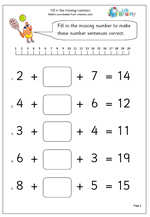 Sometimes sums can prove to be more difficult than they first appear. For many children this is the case with the kind of questions on this worksheet which require finding the missing number. Why is this difficult? Because it involves carrying out two processes, when children are used to only having to do one thing to find the answer. Whilst it is an addition number sentence, subtraction is needed to work out the answer.
Sometimes sums can prove to be more difficult than they first appear. For many children this is the case with the kind of questions on this worksheet which require finding the missing number. Why is this difficult? Because it involves carrying out two processes, when children are used to only having to do one thing to find the answer. Whilst it is an addition number sentence, subtraction is needed to work out the answer.
There are several methods which could be used to find the answer, but the most efficient is probably to:
1. Add the two single digits
2. Subtract that total from the answer.
Another way is to start with the answer and find it on the number line, then hop back the first number, then hop back the second number. Where you land is the answer.
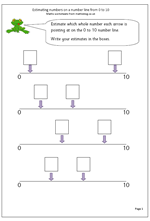
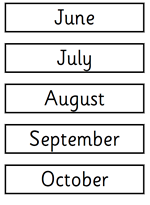
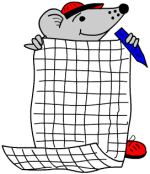
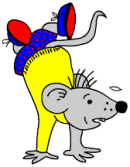
 We often assume that once children have gained some confidence with small numbers that they automatically can move on to using larger numbers. This may well not be the case.
We often assume that once children have gained some confidence with small numbers that they automatically can move on to using larger numbers. This may well not be the case.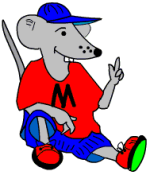 Here we have the digits from one to nine again, this time the task is to use three digits to make 12. This is much harder than just using two digits and it would be a good idea to have some cards printed out with the digits on to help with this. They are available in the reception maths worksheets section.
Here we have the digits from one to nine again, this time the task is to use three digits to make 12. This is much harder than just using two digits and it would be a good idea to have some cards printed out with the digits on to help with this. They are available in the reception maths worksheets section.